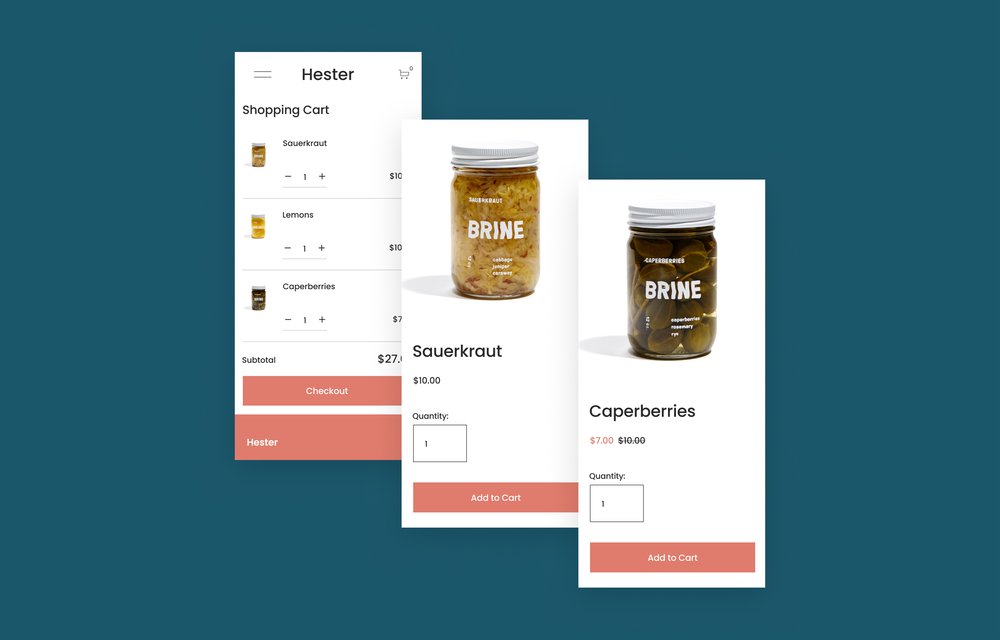Get started selling products online with our free downloadable workbook.
The email you entered is invalid.
Thank you for subscribing.
By entering your email, you indicate that you have read and understood our Privacy Policy and agree to receive marketing from Squarespace.
When you launch an online business, you’ll need to ensure your website and store look professional and work well no matter where a potential customer discovers it. For example, site features like a search bar make it easy to find your products while mobile shopping. Optimizing the checkout process ensures that it’s easy to place an order, even on a mobile device.
Read on to learn more about the different types of mobile commerce, what makes for successful mcommerce, and how mobile commerce fits into the broader definition of ecommerce.
What is mobile commerce (mcommerce)?
Mobile commerce, also called mcommerce, is a subcategory of ecommerce that’s specific to shopping and other financial transactions done on a smartphone or tablet. Mcommerce has grown quickly as mobile technology has gotten more advanced, with stores and financial institutions creating more ways for you to shop and manage money on-the-go.
Mobile commerce transactions are soon expected to make up more than 70% of ecommerce business worldwide. As those numbers continue growing, you can’t afford to lose those customers due to a bad mobile shopping experience.
Why mobile commerce matters for your business
Many customers’ first interactions with your brand will happen on their mobile device. If your site is slow to load or a visitor has trouble finding your products, that first impression can be negatively impacted.
Optimizing for mobile commerce benefits your site’s visibility, too. Search engine algorithms are more likely to rank a fast and easy-to-use site higher than one that’s slow and cumbersome, because those mobile-optimized sites are more likely to satisfy a search query quickly.
Plus, having a mobile-friendly site creates additional opportunities for you to market to your customers. As you build an online presence and social media following, having a site that’s pleasant to use and accessible from anywhere will help you expand your brand’s reach and develop a positive relationship with your customers.
Types of mobile commerce
Shopping on a phone or tablet is probably the first thing that comes to mind when you think of mobile commerce. But mcommerce also includes other financial transactions you make online.
The three main types of mobile commerce are:
Mobile shopping: This covers any purchases you make on a phone or tablet, including purchases made directly on a social media platform (known as social shopping).
Mobile payments: Mobile payments include the different ways you can make payments online, from payment processing companies to one-click or tap-to-pay payment providers.
Mobile banking: This category includes any banking activity you do on your phone or tablet, like transferring money or depositing checks digitally.
Ecommerce business owners are mostly impacted by the first two types of mcommerce, which cover your customer’s journey from beginning to end. Someone who finds it difficult to shop on your site, like struggling to find the product or service they want, for example, is likely to move on quickly. A person who makes it to checkout but then has to fill out a long form or dig out a credit card to make their purchase might get discouraged and abandon their cart.
You can avoid losing these customers by using your ecommerce platform to optimize certain online store features for mobile users. For example, Squarespace Payments and Squarespace partners with companies offering express pay options (including Apple Pay, Stripe, and PayPal), which allow customers to choose an item and check out with a few taps.
Examples of optimized mobile commerce
If you own a smartphone or tablet, you likely encounter mobile commerce optimizations in your everyday life. A few common examples of optimized mobile commerce are:
Standalone brand apps for browsing, ordering, or money management
Quick and easy checkout flows with express pay options
Clear calls to action (CTAs), like simple email signup prompts
Fast-loading websites
For real life examples, browse on your own phone and put yourself in a customer’s shoes. When did you last buy something on your phone or tablet? What made the process better or more difficult? If you didn’t experience any bumps or confusion while using a site, think about what made that process work smoothly.
Ecommerce vs. mcommerce
As noted above, mcommerce falls under the broader category of ecommerce. All mobile commerce is ecommerce, but setting up an online store isn’t the only thing you need to do to optimize for mcommerce.
While it’s best to optimize for both mcommerce and ecommerce, if you have to choose, make a decision based on your business and your customers.
If your analytics show that a majority of your customers find you via desktop browsing, you may be able to deprioritize mobile optimization and come back to it later. But if your store follows broader online shopping trends and more people are coming to your business on mobile, your sales could suffer by letting mobile optimization fall by the wayside.
Sometimes, you won’t have to choose between the two at all. Squarespace’s website templates make it easy to get your website ready for mobile commerce and desktop browsing at the same time with built-in optimizations and a mobile preview button in editing view.




